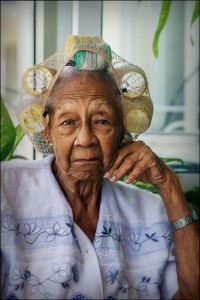The period of fear in Cuba seems to be over. Or is it just an impression?
The “culture of fear”, as Oswaldo Paya Sardinas (1952-2012), founder of the Christian Liberation Movement and a martyr of the regime, described the situation in Cuba, may be, at last, fading away in every corner of the island, hand in hand with the decline of the regime’s apparatus of control, which has plunged the country into several-decades-long delusion and decadence. To be sure, I’m not speaking in symbols, I’m talking about an actual apparatus that has been wickedly feeding on censorship and imprisonments and corpses of Cuban people for dozens of years.

Faced with the unpunishable barbarism of the State, the wisdom of our people has developed a cynical streak. Generation after generation, Cubans have been learning to fear. Fear has become a value in itself – an unmistakable symptom of our instinct of self-preservation. We learned to fear in order not to die, to live on. Or, perhaps, to die on.
Worse still, we got used to hiding that fear – we even got used to hiding it from each other. As lying became our way of life, we wanted to think of ourselves as innocent, as children facing the Patronizing Tyrant, the Philanthropic Ogre, the Maximum Leader. As a result, we have developed a kind of an Oedipus complex: everything-for-the-Revolution and everything-against-the-Revolution, as if the totalitarian utopia was the measure of everything.
The savvy of a servant: to imagine oneself being a servant at one’s own will. To think of oneself as a useless servant to one’s master instead of a servile one. To go unnoticed under the panoptic eye of the power. Indeed, we believed that this gloomy tactics would save us from being taken for the regime’s accomplices. We thought that this clean strategy could excuse our lack of concern for all injustices and evil acts around us. Oh, poor little things, that’s how we saw ourselves, so locked up under that vile Castro boot, there, in his despotic tropical paradise. As if it wasn’t enough, so far away from the world and so close to the imperial archfiend…
Behaving like infantilized citizens, we pretend not to know anything at all – this insulting ignorance forms the basis of our most sinister wisdom. We have learned to be ignorant the hard way – the Revolution has taught us. We learned not ask, not to doubt. Yet, we also learned to obey without knowing anything about what we obey, and that is the worst anthropological legacy of Castro’s regime: millions of lives based on lies, a fake Peter Pan syndrome, which all psychiatry books classify as the most incurable mental illness. Perhaps also the only truly ele/mental illness – we believe that the world around us violates our will and our only defence is self-suppression. The disease could be called a “Pinocchio Pan Syndrome”.
Fidel Castro managed to turn Cubans into rag puppets, which are now about to lose their puppeteer. Indeed, a new life form inhabits the island – the New Homunculus, an unbelievable, multi-purpose ventriloquist able to fully adapt to the rhetoric of the Revolution regardless of the era. Luckily, the 21st century has finally brought the first gleams of another illusion – the period of fear in Cuba seems to be over. Hopefully it’s not just an impression.
It’s easy to switch from fear to a lie, without any transition. On the other hand, there is a great abyss between living in lies and living in truth, which can only be overcome by the power of virtue. For Fidel Castro, virtue is a war crime, an act of treason. It is something that the Commander in Chief has never been able to forgive Cubans – it fills him with horror, if he cannot corrupt us. That’s also the reason why the regime cold-bloodedly murdered the freest man in Cuban history – Oswaldo Paya Sardinas. For that very reason the executioners in olive green uniforms did not hesitate to sacrifice the life of a young witness of the crime (as if it were collateral damage), the social activist Harold Cepero, one of the noblest and most brilliant leaders of the Christian Liberation Movement.
The Varela Project, initially conceived by Oswaldo Paya and jointly carried out by hundreds of citizens committed to achieving real change in Cuba, has been the most important point of identification between opponents, dissidents and common people. It should be emphasised that those who signed this peaceful and constitutional initiative to amend Cuban laws managed to drop the mask of cowardice and cynicism. They stopped being Fidel’s subjects and inaugurated the future, which has been stolen from them since the first Thursday in January 1959.
The Varela Project has been the first demonstration in Cuba in decades with participation of thousands of Cubans. Yet, it wasn’t an ordinary demonstration in streets, which, in a militarized state like Cuba would only result in a Tiananmen-style slaughter under the baton of the Havana government (which would probably provoke hardly any international condemnation). It was a different kind of demonstration – one that took place within the very heart of the system (an infarcted one). It was a libertarian statement made right within the obsolete government authorities. Actually, with the Varela Project, Cubans have jointly said “NO” to lies and fear and they said it openly, before the disbelieving eyes of the world.
Thanks to Albert Camus, who was also a victim of a car attack like Cepero and Paya, we know that a rebel is someone who once stops and says NO. The realization of this has been the source of Castro’s vengeful panic when he found out that after the Varela Project, the socialist system in Cuba could never be considered legitimate any more. He still owes Cubans an answer to this and for this reason, he has to make way for a transition, which will put an end to the seizure of the State by a clan dressed up as the Communist Party (which is but one of the many mafia families that have turned Latin America into one large, uncivil cemetery).
Cuban paradoxes: the overwhelming majority of signatories of the Varela Project were people employed within Castro’s Cuba. That means that the petition was actually signed by people paid by the establishment itself, it was signed by the Cuban proletariat, by people from within the system, who, at close range, like an apoptosis in face of the apotheosis of the Revolution, exercised their right guaranteed by Article 88g of the Constitution ratified by the tyrant himself in 1976.
The Varela Project is a cry of hope in the midst of defeat and emptiness, a farewell to the empire of lies and fear. It is the most feasible of all hopes to fully restore the splendour of the word “truth”. Naturally, quite a few of the signatories were expelled from their jobs and schools. Almost all leading representatives of the initiative ended up in prison and were deported. To top it all, the father of the project was assassinated. Nevertheless, the repressive power is unable to focus on each individual person in the ocean of over 25,000 signatories, who are still waiting for the Cuban National Assembly of People’s Power to start observing its own law.
In a way, each signatory to the Varela Project is a living gospel; beyond any political affiliation (which is a very ephemeral thing, anyway) and any ideology (always so idiotic!). Being apolitical, they are an instrument capable of mobilizing the best energies not only in civil society, but the Cuban nation as a whole, be it inside or outside the fossilised borders of the island, a nation that has only just started to enter the era of modernity.
In recent years, many countries (whose number, however, should have been higher), showed their solidarity with the human rights activists in Cuba, supplying them with audiovisual recording equipment and laptops to allow them to edit their recordings. Thanks to this, the State can no longer hide repressive acts against Cubans in the island behind the “Sugar Curtain”, it can no longer cover them in the darkness typical of the Middle Ages. Thanks to this, many acts involving violation of rights and physical violence by the Police can now be recorded and, sooner rather than later they are reported to the world, using the cracks in the wall of the government censorship trying hard to stop people from obtaining private Internet access.
For this reason, it has now become less difficult to abandon the lie of the “perfect social system” because more and more Cubans have gathered first-hand testimonies – records of violations made either by themselves or by their neighbours, which can be preserved for posterity. Yet, video cameras (formerly with tapes, these days almost always digital) are not only the voice of the brave, they also show the truth of those who still don’t have enough courage to be their true themselves in their country.
Facts are dumb and that may be the reason why they are so eloquent. They are absolutely independent of the point of view of those who narrate them or receive their message. They cannot be manipulated, unlike many other things including the popular imagination, when it gets caught in the crossfire of tribunes and state terrorists. Facts are quantum critical points of history, they nourish hope. Despite the deaf demagoguery typical for the Castro regime since the very beginning, it’s now perfectly clear that history will condemn the Castro, Inc.
Beyond any internal differences and disappointments, Cuban opposition is still alive and kicking, narrating the indisputable facts of the penultimate days of the era of despotism. The future is now. So be it.

Leave a comment